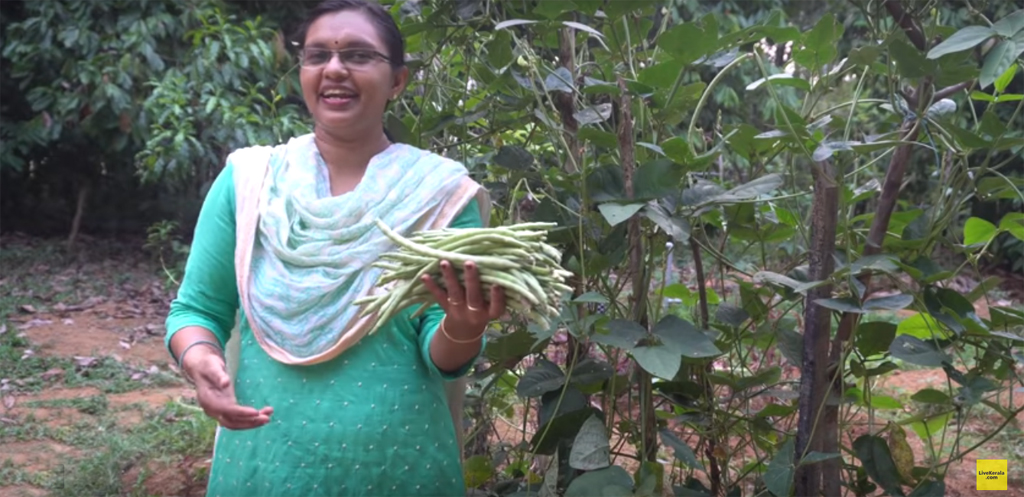Payar – Easy to cultivate in kerala even in backyard and terrace and an essential protein rich vegetable
Cowpea can be cultivated very easly, It is easy to grow, even for beginners can do, and well in any climate. Cultivated in a wide range of soils in kerala, very well in sandy and sandy loam soils. Make sure the soil is rich in organic matter. It is widely cultivated in Kerala even in courtyard, terrace and farms.

It is protein rich, it should be included in your diet. These are fibrous vegetable and hence it helps digestion. These are known by many names and varieties, such as Vallippayar, Kuttippayar, Achinga Payar, Vanpayar, etc. Cultivation of beans helps to improve soil fertility. Pulses are sown in the kitchen garden, in coconut groves and in post-harvest paddy fields. Pulses can be grown in the backyard at all times. Summer farming is the best.
Harvesting can be started after 40 days of seeding. Dip the beans in water for six hours for getting sprouts. Sprouts can be grown in pots, crates or growbags. Prepare the soil mixed with lime two weeks before planting in order to reduce acidity of the soil. Three or four days before planting, mix the cow dung, bone powder and neem cake with soil and water it twice a day. Place the seedling in the middle. Water the plant daily. Provide facilities for spreading of branches.
Fertilizer and irrigation should be done from the beginning. Organic fertilizers are important in growth of the plant. Organic fertilizers should be added in soil for microbial growth, hydration, and absorption of chemical fertilizers. More and less irrigation in pulses can adversely affect plant growth. Proper watering should be ensured for a good crop. Avoid water accumulation in the beds. If the biomass is purified once a week and the biomass is added every 2 weeks, the pulse will grow faster. Fish Amino is good for beans are very good for flowering and removing mites.
Powdery Mildew is a fungal disease that affects beans in winter and rainy seasons. The fungus is found on the leaves and stalk as it looks like tiny spots on the leaves and spreads like powder put on it. The leaves eventually turn yellow and decay. Spray copper oxychloride diluted with water in the proportion of 2 g / liter of water for controlling the disease.
Mites start to attack the crop when harvesting time reaches. Hanging sardine in different parts of the garden can get rid of the mites to some extent. Mites and moth larvae can be controlled by spraying Neem oil emulsion. Where beans are cultivated, planting bandi flower is effective for preventing the mites.
Spray neem oil-garlic mixture to get rid of the ‘picture pest’. To get rid of the ‘fruit borer pest’, sprinkle 100ml of cow urine mixed with 9 times of water, five grams of asafoetida and ten grams of Kandhari extract. The beans usually flower within 45 to 50 days. For quick flowering, cut 10% of the leaves and then spray pseudomonas mixed with water in the proportion of 5gm per liter of water.
If proper measures are taken for use of good quality seeds, selection of the cultivation area getting sunlight, availability of fresh air, destruction of the leaves affected with disease and keeping of the farm clean, the beans cultivation will be successful.
For more agricultural videos: https://youtu.be/36XAPieimOI
https://www.youtube.com/channel/UCcnKSVRaPkP5eCDBNFLTZEw
